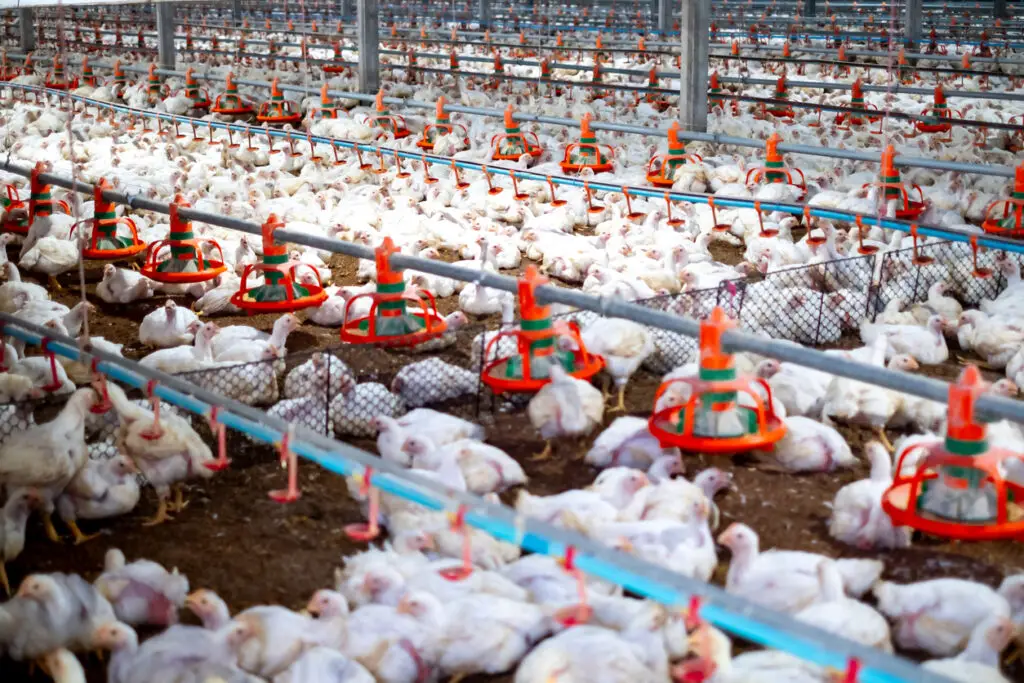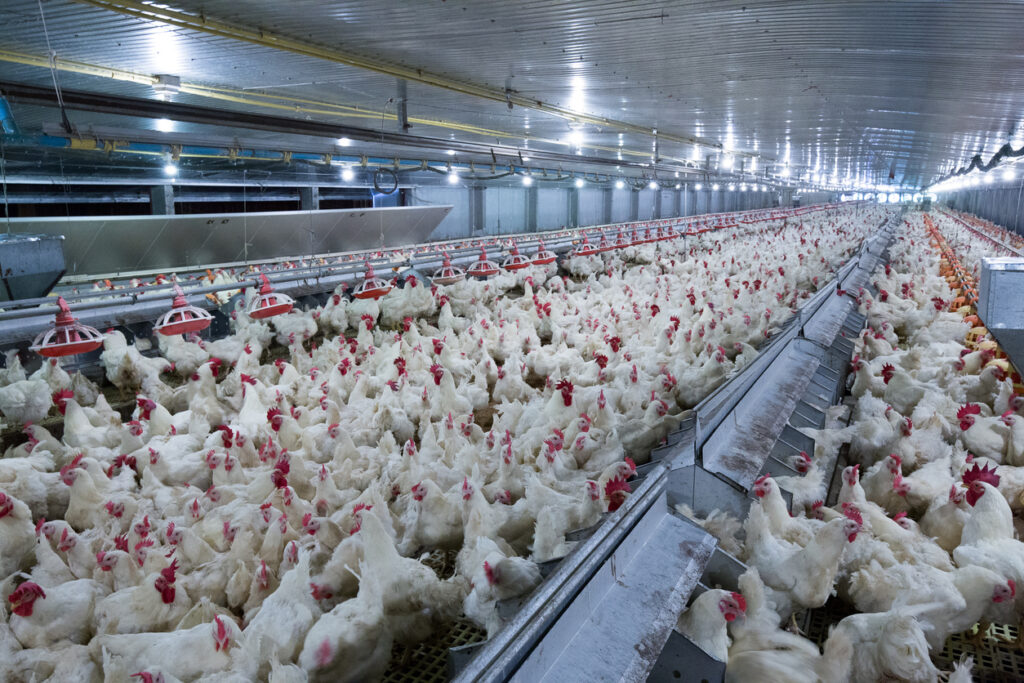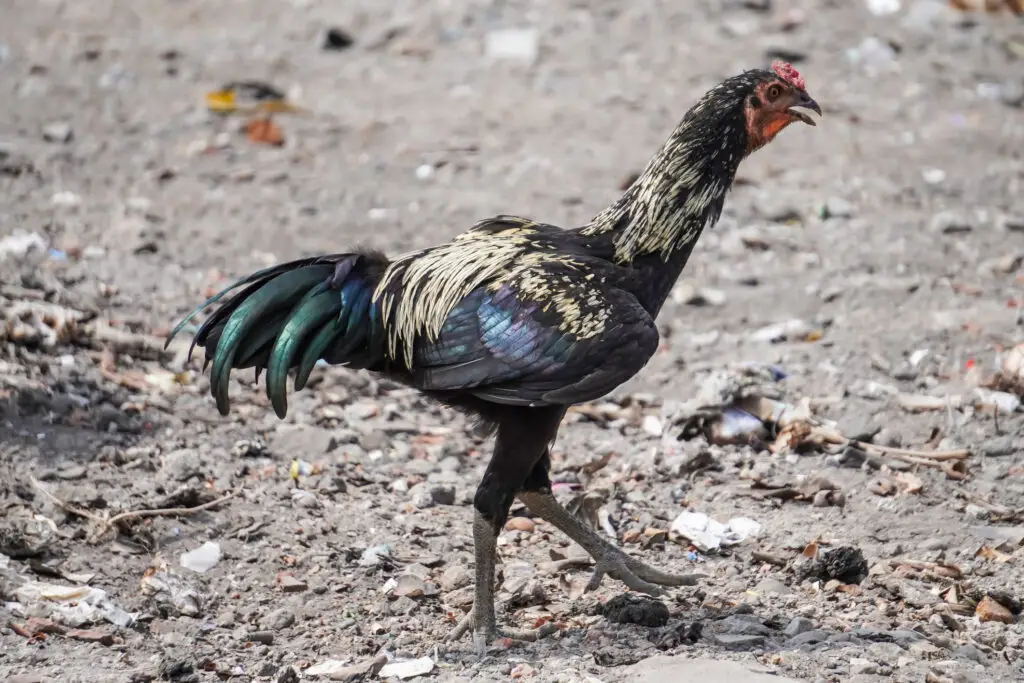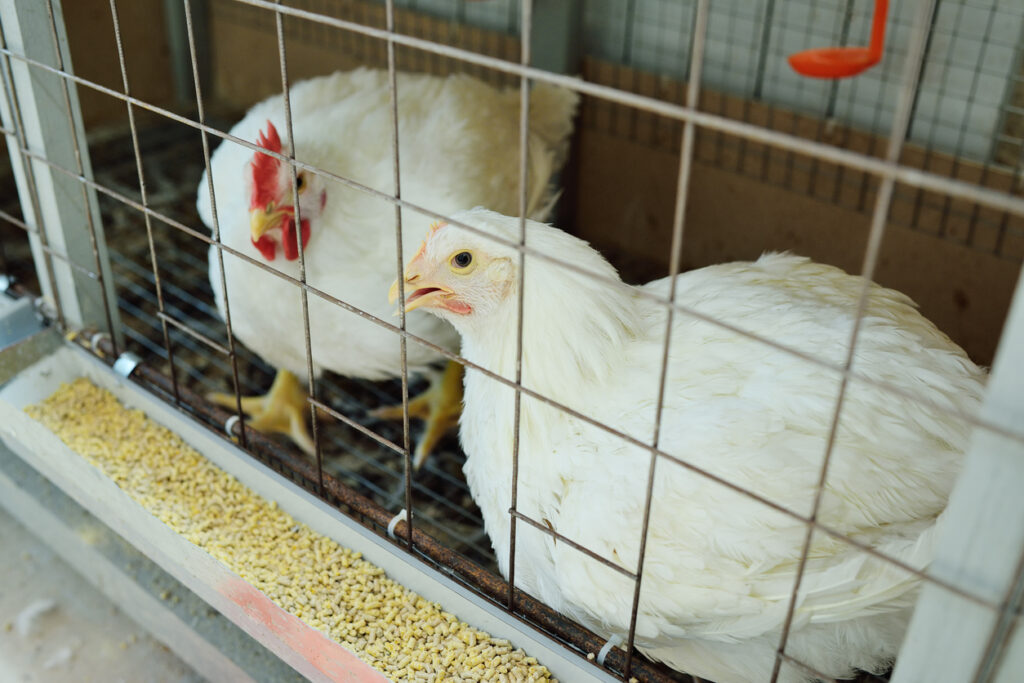1. Direct Contact Between Wild Birds and Domestic Poultry

One of the primary ways bird flu spreads from wild birds to the pet food supply chain is through direct contact between wild birds and domestic poultry. Wild birds, particularly waterfowl like ducks and geese, are known to carry the avian influenza virus without showing symptoms. When these wild birds come into close contact with domesticated poultry, such as chickens and turkeys, they can transmit the virus through their feces, saliva, and nasal discharge. According to WOAH, this direct contact can occur in free-range environments or at poultry farms where wild birds have access to feed and water sources.
Infected domestic poultry then becomes a source of contaminated meat that enters the pet food supply chain. If the virus is not detected before processing, infected poultry can be ground up and included in pet food products, posing a risk to animals that consume them. Even a small outbreak at a poultry farm can result in widespread contamination of pet food ingredients, making it crucial for manufacturers to closely monitor their supply chains and ensure that their ingredients are virus-free before use in production.
2. Fecal Contamination in Water Sources

Bird flu can also spread through the feces of infected wild birds. Wild birds, especially migratory waterfowl, are known to excrete the virus in their droppings, which can contaminate water sources that domestic poultry drink from or bathe in. If wild birds land near poultry farms or free-range flocks, the virus can easily spread through fecal contamination in shared water supplies. According to a technical report by the European Centre for Disease Prevention and Control (ECDC), the presence of H5N1 in water bodies poses risks not only to birds but also to humans who may come into contact with contaminated water.
When this happens, the virus can spread to domestic poultry that drink or bathe in contaminated water. Once infected, the poultry can become carriers of the virus and can potentially transfer it to the pet food supply chain. This transmission route is particularly concerning because wild birds may travel long distances, inadvertently spreading the virus over vast areas and infecting numerous farms. Contaminated poultry products can make their way into pet food manufacturing facilities, resulting in potentially harmful recalls.
3. Contaminated Feed and Bedding Materials

Another way the bird flu virus spreads from wild birds to the pet food supply chain is through contaminated feed and bedding materials. Wild birds can spread the virus through their feces, which may land on crops or feed that is later used to feed domestic poultry. If the feed is not properly sanitized or treated, the virus can be transmitted to poultry, making them a risk for contamination. According to a study published in the International Journal of Environmental Research and Public Health, wild birds may leave the virus on bedding materials or other surfaces within poultry farms, where it can easily spread to domestic flocks.
Once the domestic poultry is infected, they may be processed into meat that enters the pet food supply chain. Feed that is contaminated with the virus can also pose a risk to pets if it is used as an ingredient in pet food. This contamination can occur even if the pet food contains no direct poultry products, as poultry byproducts like meal or fat are often used in the production of pet food. Monitoring and controlling feed sources for contamination is therefore essential to ensuring the safety of the pet food supply.
4. Airborne Transmission via Droplets

Bird flu can also spread from wild birds to domestic poultry through airborne transmission. Infected wild birds shed the virus through respiratory droplets when they cough, sneeze, or even when they just move around. According to the CDC, these droplets can linger in the air, potentially infecting domestic poultry nearby, especially if they are housed in close proximity. Poultry farms that are located near wild bird habitats or migratory routes are particularly at risk of this type of transmission.
Once the virus reaches domestic poultry, it can lead to an outbreak on the farm. Infected poultry may then be harvested and processed for pet food, introducing the virus into the food supply chain. Airborne transmission makes it difficult to completely contain the spread of the virus, especially during migratory bird seasons when large populations of wild birds travel long distances, spreading the virus to new areas and farms. This further complicates efforts to ensure that poultry used in pet food production is free from contamination.
5. Movement of Infected Poultry and Raw Products

The movement of infected poultry and raw poultry products from one farm to another is another pathway through which bird flu can spread into the pet food supply chain. Infected birds may be transported between farms for breeding, slaughter, or processing purposes, unknowingly spreading the virus. According to the World Organisation for Animal Health (WOAH), this movement is a critical factor in the transmission of avian influenza, as it facilitates the spread of the virus across various locations. Additionally, poultry products, including meat and eggs, are often transported over long distances to different regions for processing or distribution.
If any poultry in the supply chain is infected with the bird flu virus, the virus can spread to other farms and production facilities. This can result in contamination of poultry used in pet food manufacturing, leading to recalls. Poultry processing plants must implement strict biosecurity measures to prevent the movement of infected products, including proper sanitization protocols and disease testing. The risk of the virus spreading through the movement of infected poultry makes it essential for all levels of the poultry supply chain to be vigilant about preventing contamination.
6. Cross-Contamination During Processing and Packaging

Even after poultry is slaughtered and processed, there is still a risk of bird flu spreading through cross-contamination during processing and packaging. If infected poultry enters a processing facility, there is the potential for the virus to spread to other products if proper sanitation protocols are not followed. Processing plants that handle both raw and cooked poultry must implement strict measures to prevent the virus from contaminating non-infected poultry products.
Cross-contamination can occur during various stages of processing, from slaughter to packaging. Contaminated equipment, surfaces, or workers’ hands can spread the virus to other batches of poultry, which may eventually end up in pet food products. Packaging materials that come into direct contact with infected poultry could also carry the virus and introduce it to finished pet food products. Stringent hygiene standards and constant monitoring for potential contamination are essential to reducing the risk of cross-contamination and ensuring that pet food products are safe for consumption.


